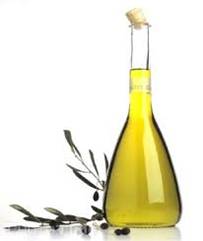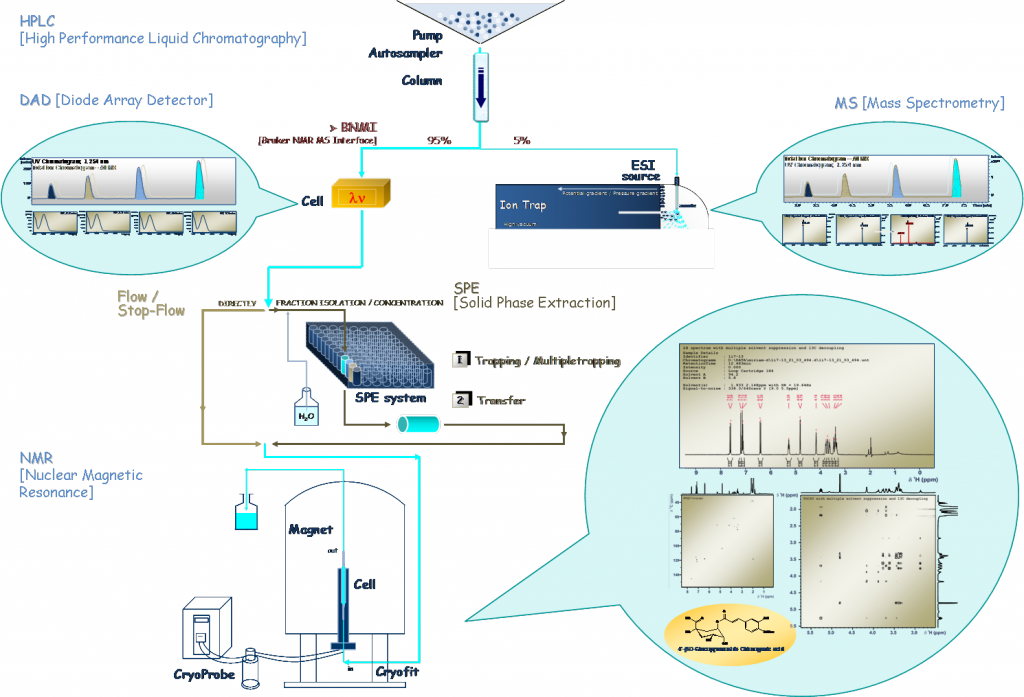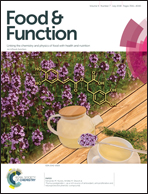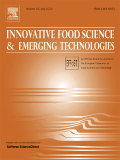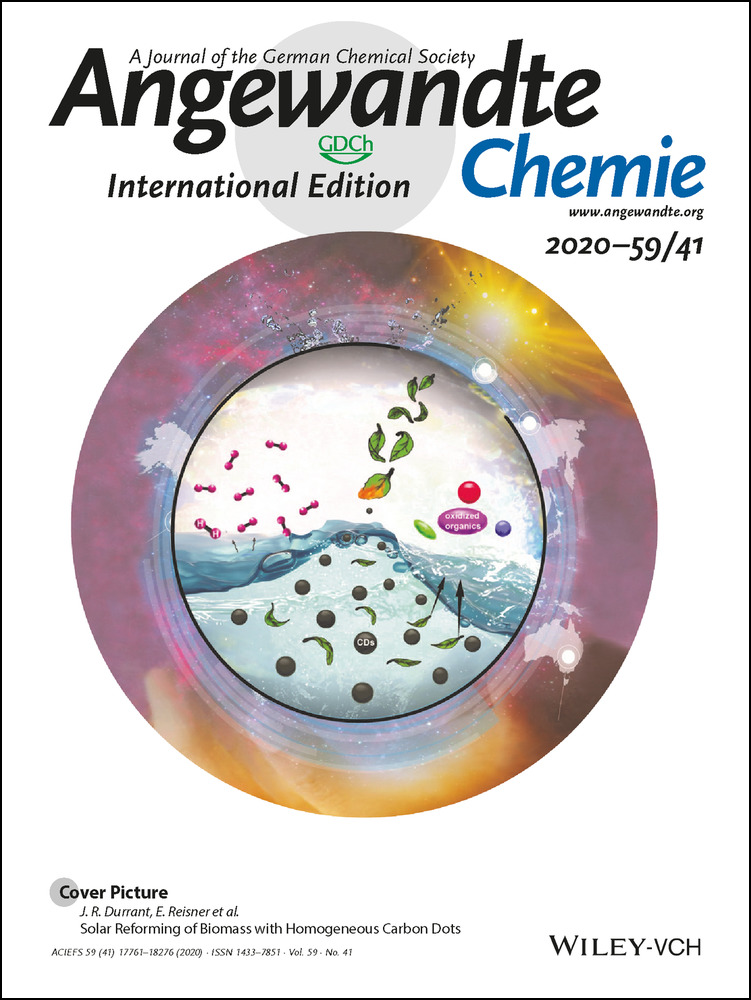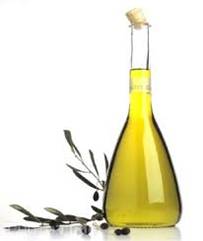 There is a great interest in understanding the biochemical basis for the reported beneficial health effects of particular diets or food groups. Characterising the wide variety of nutrients in the things we eat and drink in detail is a substantial analytical challenge, especially when numerous sets of molecules in such mixtures may have very similar chemical structures.
There is a great interest in understanding the biochemical basis for the reported beneficial health effects of particular diets or food groups. Characterising the wide variety of nutrients in the things we eat and drink in detail is a substantial analytical challenge, especially when numerous sets of molecules in such mixtures may have very similar chemical structures.
How can we address this problem and help identify the components that are of biological significance? One of the most powerful analytical approaches is to combine high-resolution NMR spectroscopy with chromatographic separations to enable the identification of the individual biochemicals that are present in foodstuffs.
A recent study carried out in the SeRMN in collaboration with the Universidad de Granada allowed the detection and identification of a large number of phenolic compounds present in Extra Virgin Olive Oil (Cornezuelo variety). The study was performed using the hyphenated technique HPLC-DAD-SPE-NMR/MS, which allows the separation of complex mixtures and the parallel detection of molecules using complementary techniques such as NMR and MS. Importantly, this work has provided novel insight into the chemical makeup of this widely-used aliment.
This work was presented at Euromar 2009, Göteborg (poster: LCNMR Olive Oil), and has been published in the Journal of Agricultural and Food Chemistry.
M. Pérez-Trujillo, A. M. Gómez-Caravaca, A. Segura-Carretero, A. Fernández-Gutiérrez, T. Parella; Journal of Agricultural and Food Chemistry 58, 9129-9136 (2010).
